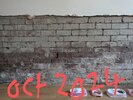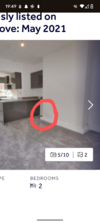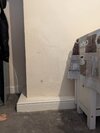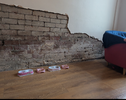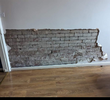I have no idea about walls I'm just going of my EPC which says the property is solid walls with no cavity.
Your outside walls might have no cavity, but the party wall may have one. Normally, a 9" wall, would have a few bricks laid end on, so they tie the two leaves of the wall together. A cavity wall would have wall ties, tieing across the cavity gap, so no end-on bricks visible. A single brick wall would look exactly the same.


